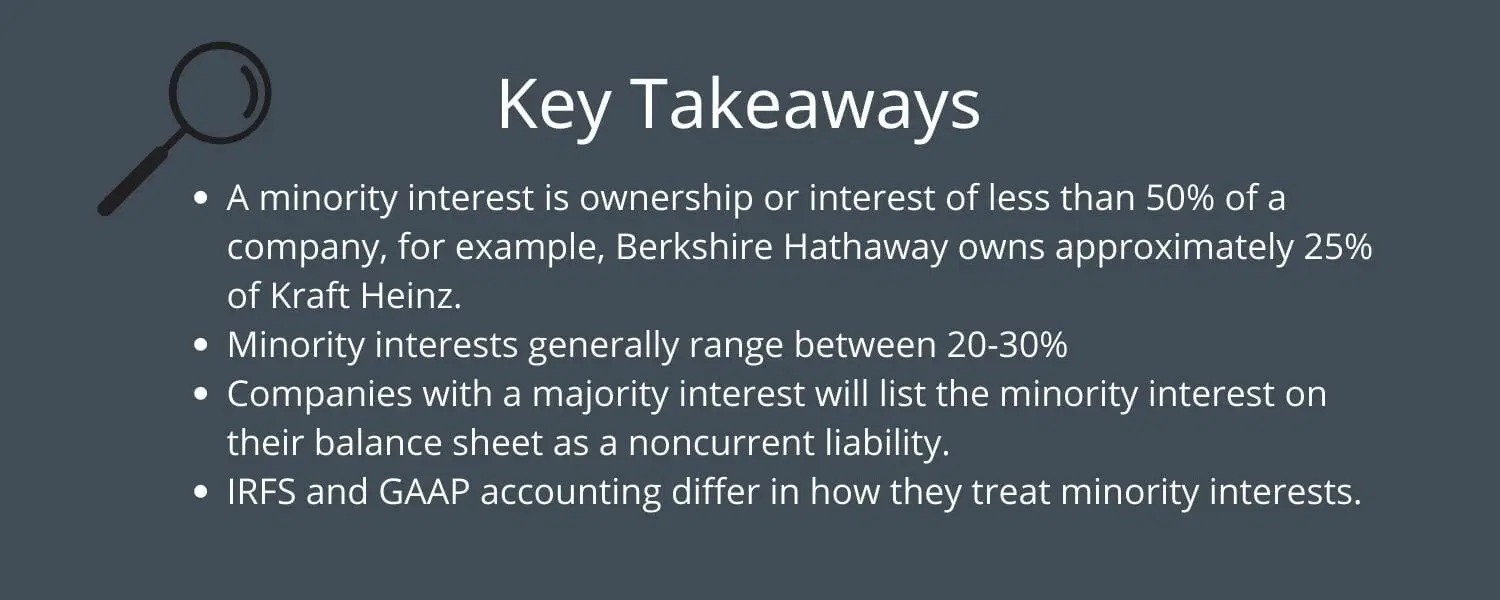Home>Finance>Minority Interest: Definition, Types, And Examples


Finance
Minority Interest: Definition, Types, And Examples
Published: December 25, 2023
Learn the definition, types, and examples of minority interest in finance. Expand your knowledge of minority ownership in various industries.
(Many of the links in this article redirect to a specific reviewed product. Your purchase of these products through affiliate links helps to generate commission for LiveWell, at no extra cost. Learn more)
Welcome to the world of finance! Today, we’re diving into the topic of Minority Interest.
Understanding Minority Interest is essential for anyone looking to expand their knowledge in the finance industry. In this blog post, we’ll define what minority interest is, explore the different types, and provide some examples to help you grasp the concept better.
Key Takeaways:
- Minority interest refers to the ownership stake in a company held by individuals or entities that do not have a controlling interest.
- There are two main types of minority interest – non-controlling interests in subsidiaries and non-controlling interests in joint ventures.
Now, let’s dive a bit deeper into each of these aspects.
What is Minority Interest?
Minority interest, also known as non-controlling interest, refers to the ownership stake in a company held by individuals or entities that do not have controlling decision-making power. When a company has subsidiaries or enters into joint ventures, there are often multiple shareholders involved. Minority interest represents the ownership stake of those shareholders who do not have a controlling interest.
Types of Minority Interest
There are two main types of minority interest:
- Non-controlling interests in subsidiaries: This type of minority interest refers to the ownership stake held by individuals or entities in a subsidiary that is majority-owned by another company. In this scenario, the parent company has a controlling interest while the minority shareholders have a non-controlling interest.
- Non-controlling interests in joint ventures: In joint ventures, two or more parties come together to form a separate entity to pursue a specific project or business opportunity. Each party involved holds a certain percentage of ownership in the joint venture, with some having a controlling interest and others holding minority interest.
Examples of Minority Interest
Let’s take a look at a couple of examples to illustrate the concept of minority interest:
- Example 1: XYZ Inc. and its Subsidiary – XYZ Inc. is a larger corporation that owns an 80% stake in a subsidiary company, ABC Corp. The remaining 20% of ownership is held by external investors through publicly traded shares. In this case, these external investors have minority interest in ABC Corp.
- Example 2: Joint Venture between A Corp and B Corp – A Corp and B Corp decide to form a joint venture to develop a new product. A Corp holds a 60% stake in the venture, while B Corp has a 40% stake. B Corp’s ownership represents the minority interest in this joint venture.
Understanding minority interest is crucial for investors, financial analysts, and professionals in the finance industry. By recognizing the different types of minority interest and their implications, individuals can make informed investment decisions and assess the overall financial health of a company.
Conclusion
So, there you have it – a comprehensive overview of minority interest, its definition, types, and examples. Remember, minority interest plays a significant role in determining the overall ownership structure and decision-making power within a company.
By understanding minority interest, investors and financial professionals can gain valuable insights into the complex dynamics of business ownership. Armed with this knowledge, you’ll be better equipped to navigate the intricacies of the finance world.
Thank you for joining us for this exploration of minority interest. We hope you found this blog post insightful and informative. Keep expanding your financial knowledge, and stay tuned for more exciting topics from our “FINANCE” category!














